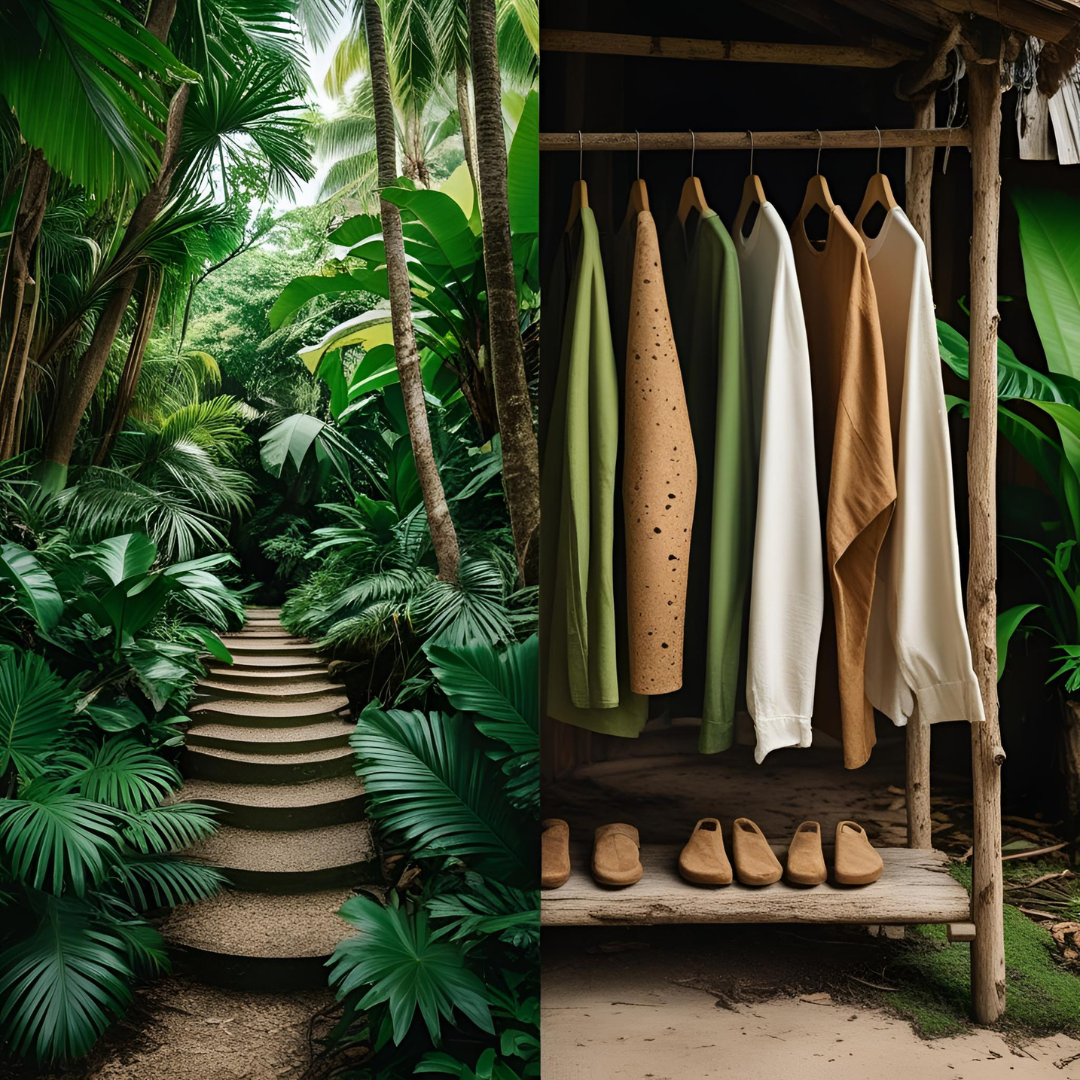The fashion industry is, unfortunately, one of the most environmentally impactful sectors. One of the biggest targets of this environmental footprint is tropical forests. Rampant deforestation for raw materials like conventional cotton, viscose, and even leather threatens entire ecosystems, endangering countless native species, vital water resources, and traditional communities that depend on these biomes.
But the good news is: there’s a different path. Thanks to innovative technologies and growing pressure for a more ethical and responsible fashion industry, many companies are adopting and developing fabrics that help preserve tropical forests. These materials minimize environmental impact without compromising style, quality, or functionality.
In this article, you’ll discover which fabrics are leading this sustainable revolution, how they work, and—most importantly—why choosing them in your daily life can be a powerful act of environmental activism.
The Problem: Fashion and Deforestation
Tropical forests like the Amazon, the Congo Basin, and Southeast Asia’s rainforests are being destroyed at an alarming rate. This devastation is driven by several factors, many directly linked to fashion supply chains:
- Intensive cotton farming: Often grown in monocultures requiring vast land and heavy pesticide use, leading to deforestation and soil degradation.
- Cellulose extraction: For fabrics like viscose, modal, and rayon—commonly sourced from ancient and endangered forests.
- Cattle ranching for leather: A leading driver of deforestation, especially in the Amazon.
- Toxic wastewater: Textile factories dump dyes and harsh chemicals into rivers and soils, contaminating entire ecosystems.
According to the Rainforest Action Network, a staggering 150 million trees are cut down annually just to supply the fashion industry with cellulose-based textiles. This process not only threatens biodiversity but also accelerates climate change by releasing vast amounts of carbon into the atmosphere.
The Solution: Fabrics That Help Protect Tropical Forests
The good news is: innovation is on the side of sustainability. There are now ethical alternatives that replace harmful materials with a much lower environmental impact. Here are the top fabrics helping to protect our forests:
1. Tencel™ (Lyocell)
Made from wood pulp, Tencel is sourced from certified, sustainably managed plantations. Its key innovation is its closed-loop process, where ~99% of water and solvents are recovered and reused.
Why it’s forest-friendly:
- Uses reforested wood, not native forests
- Minimal waste during production
2. Modal Eco (Lenzing™)
Like Tencel, Modal Eco is made from responsibly sourced wood pulp. It offers softness, breathability, and is ideal for various garments.
Benefits:
- Low-carbon, optimized production
- Longer life cycle than conventional cotton
- A sustainable alternative to conventional viscose
3. Certified Organic Cotton
Conventional cotton uses huge amounts of water and pesticides, often grown on illegally deforested land. Organic cotton avoids these issues through crop rotation and soil-friendly methods.
Why it’s sustainable:
- No chemical runoff
- Protects pollinators and farmer health
- Certified by GOTS and other sustainability standards
4. Hemp
One of the oldest textiles known to humanity, hemp is fast-growing, requires no pesticides, little water, and even regenerates the soil.
Positive impact:
- Highly renewable, fast-growing
- Doesn’t compete with native forest land
- Naturally antibacterial and durable
5. Pineapple Fiber (Piñatex®)
Developed from discarded pineapple leaves, Piñatex is a plant-based, cruelty-free leather alternative. It repurposes agricultural waste that would otherwise be burned or dumped.
Advantages:
- No animal cruelty
- Prevents CO₂ from leaf burning
- Stylish and vegan material
6. Natural Cork
Harvested from cork oak bark without cutting down the tree. In fact, cork harvesting extends the tree’s lifespan and boosts CO₂ absorption. Cork forests are biodiversity hotspots.
Why it’s forest-friendly:
- Protects native ecosystems
- Harvested manually with minimal environmental impact
- Biodegradable, light, and elegant
7. Recycled Fibers (Recycled Cotton & Polyester)
Reusing existing fibers drastically reduces demand for raw resources. Brands now create fabrics from post-consumer waste, old textiles, PET bottles, and abandoned fishing nets.
Environmental benefits:
- No need for virgin materials
- Less demand for deforested land
- Reduces textile waste buildup globally
How to Identify Forest-Responsible Sustainable Fabrics
When shopping, look for certifications that guarantee ethical sourcing and sustainable textile production:
- FSC® (Forest Stewardship Council) – ensures wood/cellulose comes from responsibly managed forests.
- PEFC (Programme for the Endorsement of Forest Certification) – another trusted system for sustainable forestry.
- GOTS (Global Organic Textile Standard) – the gold standard for organic fibers, from harvest to manufacturing.
- Lenzing Certification – confirms ethical origins for Tencel™ and Modal Eco fibers.
Brands that follow these certifications are truly committed to forest conservation and global ecological health.
Fashion with Purpose
Conscious fashion isn’t a fleeting trend—it’s an urgent environmental and social necessity. By choosing forest-friendly fabrics, you make a real impact: protecting biodiversity, Indigenous communities, and the planet’s future.
Getting dressed can—and should—reflect a commitment to life in all its forms.
💬 Did you know all of these eco-friendly fabrics? Which one caught your attention—or have you used any already? Leave a comment and share your thoughts!
🔁 If this article helped you understand fashion’s impact better, share it with someone interested in sustainability and ethical fashion!







